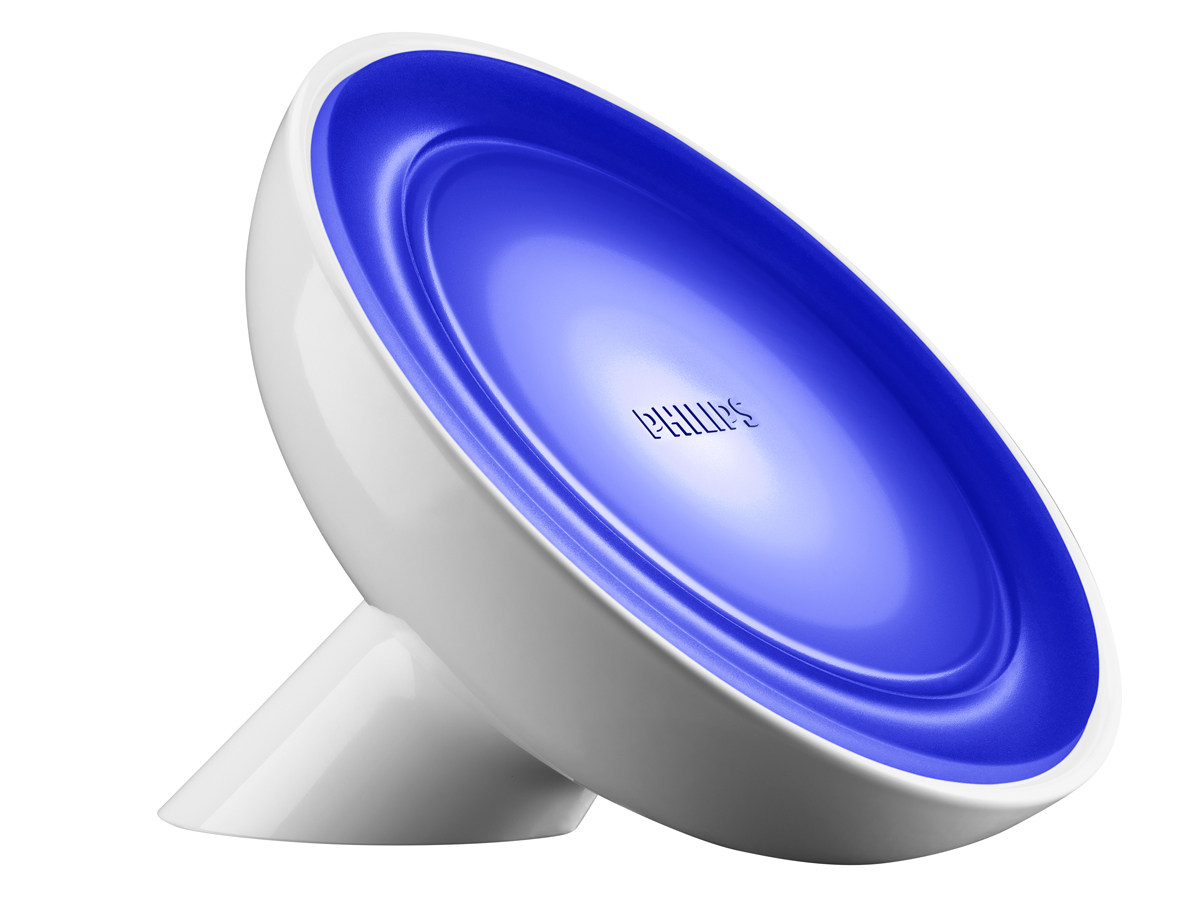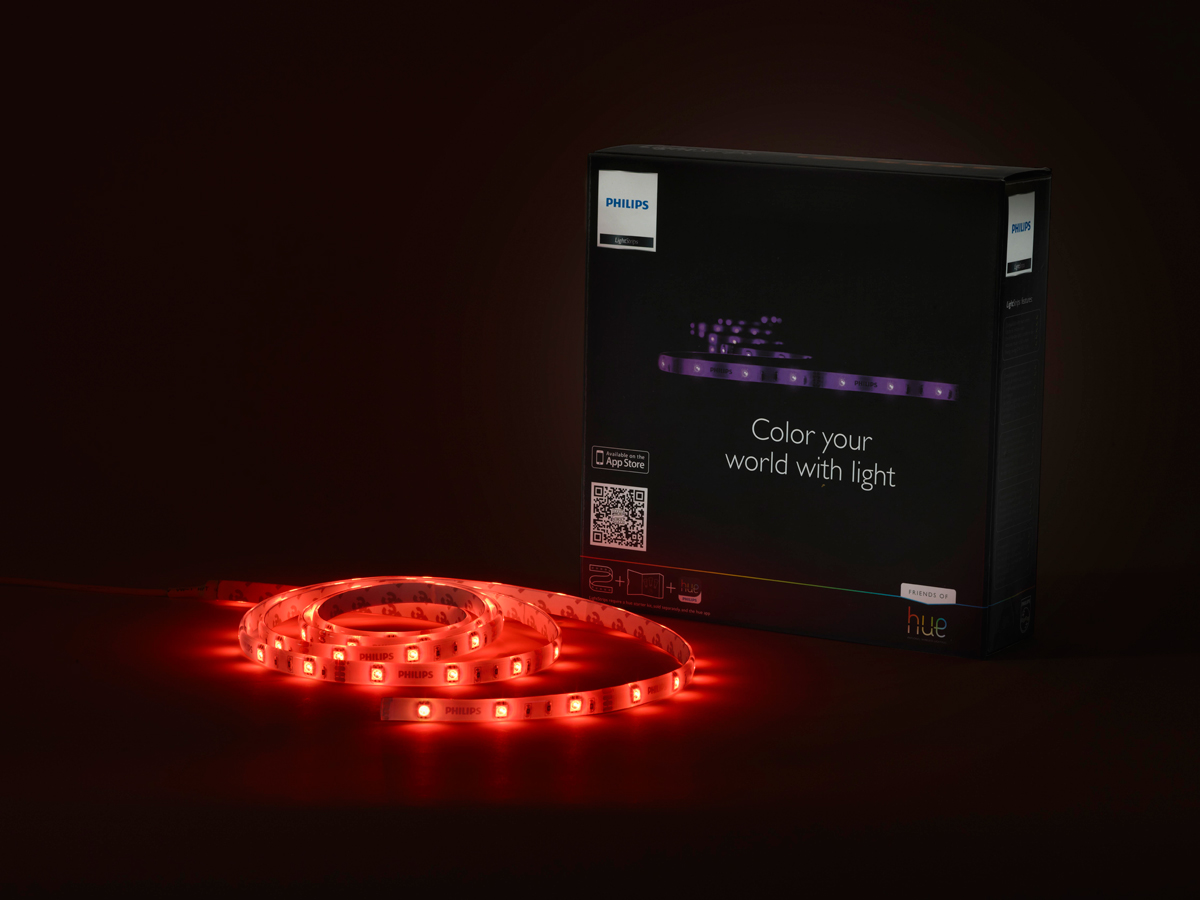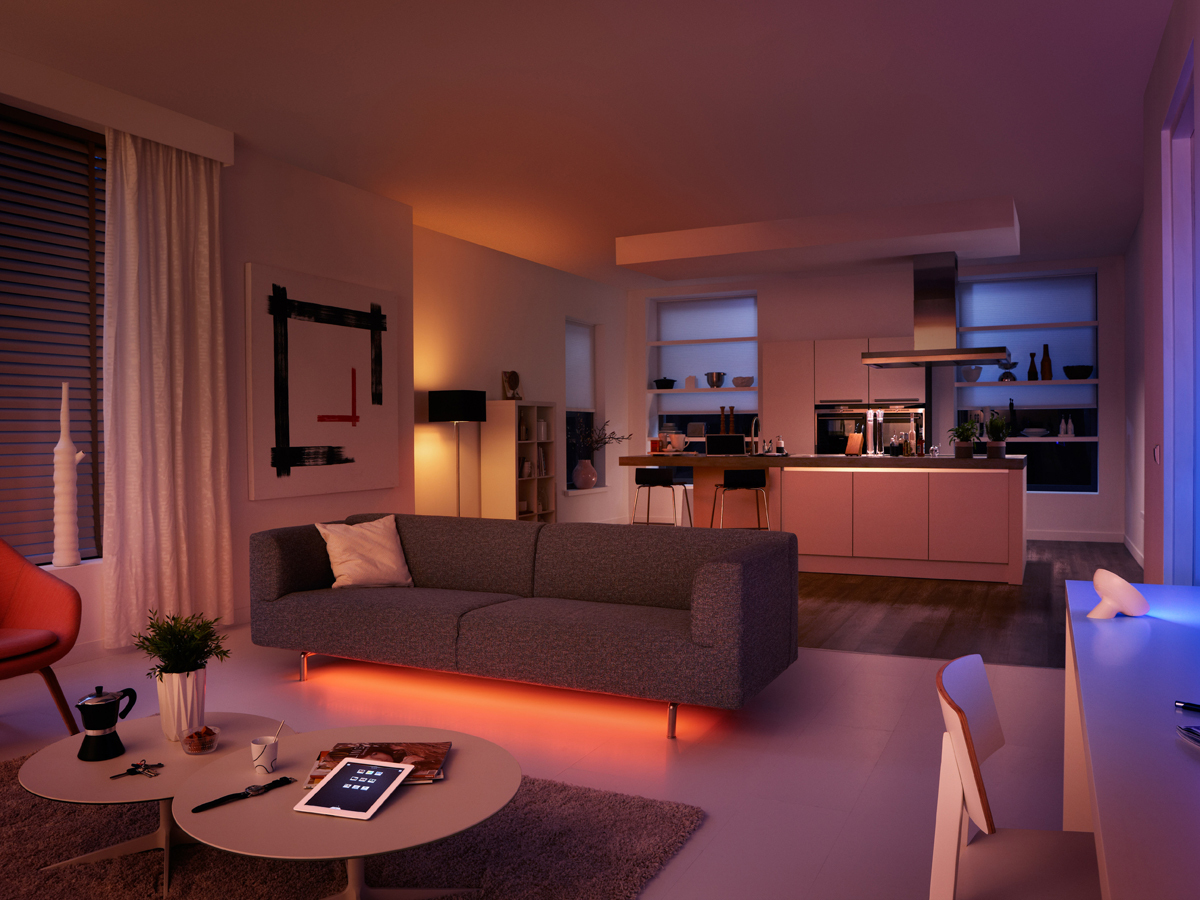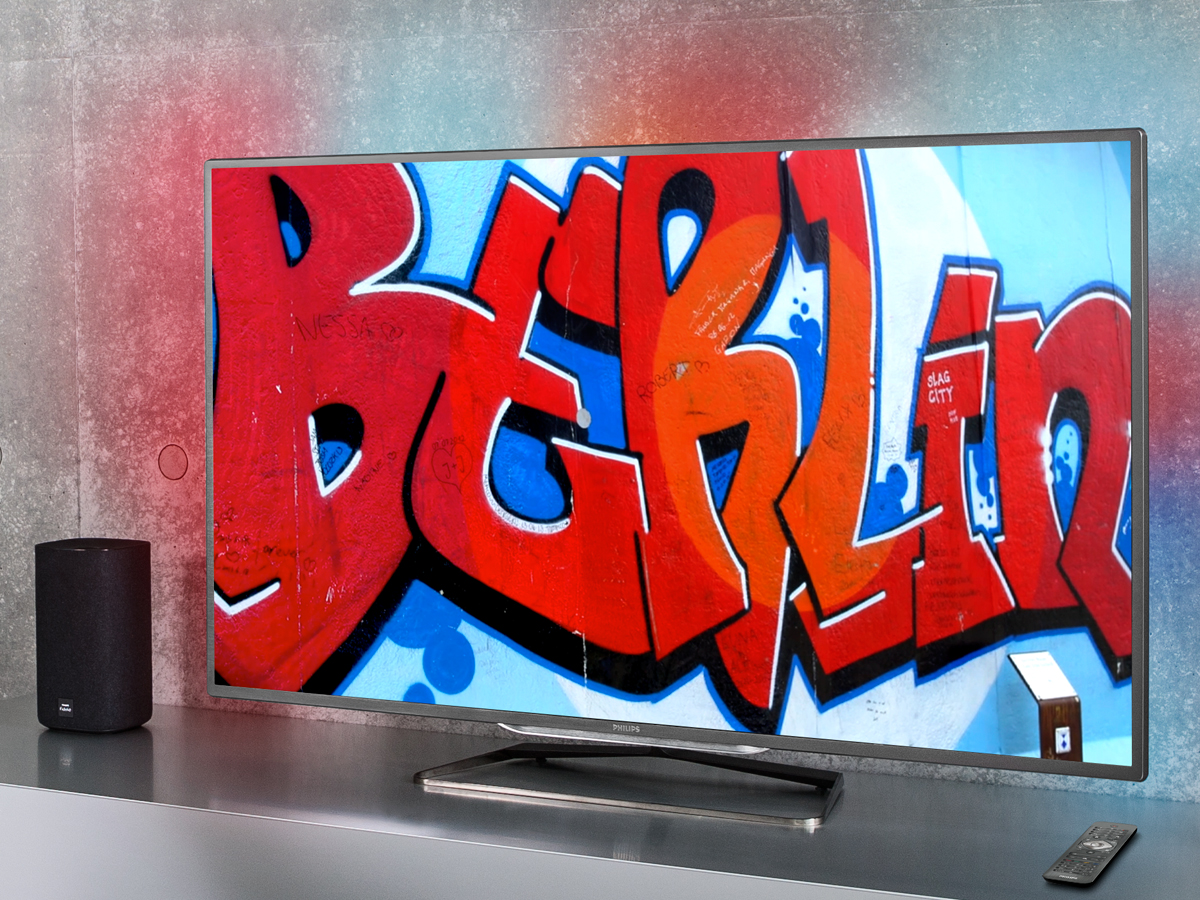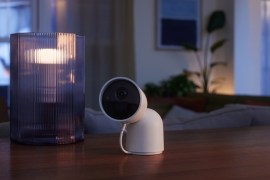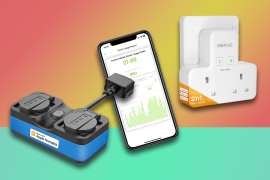Eyes-on with Philips Ambilight+Hue
Philips’ light-up tellies now work with its web-ready bulbs – but do you really want your living room to look like the inside of a tropical fish tank? Yes, you do. And here’s why...
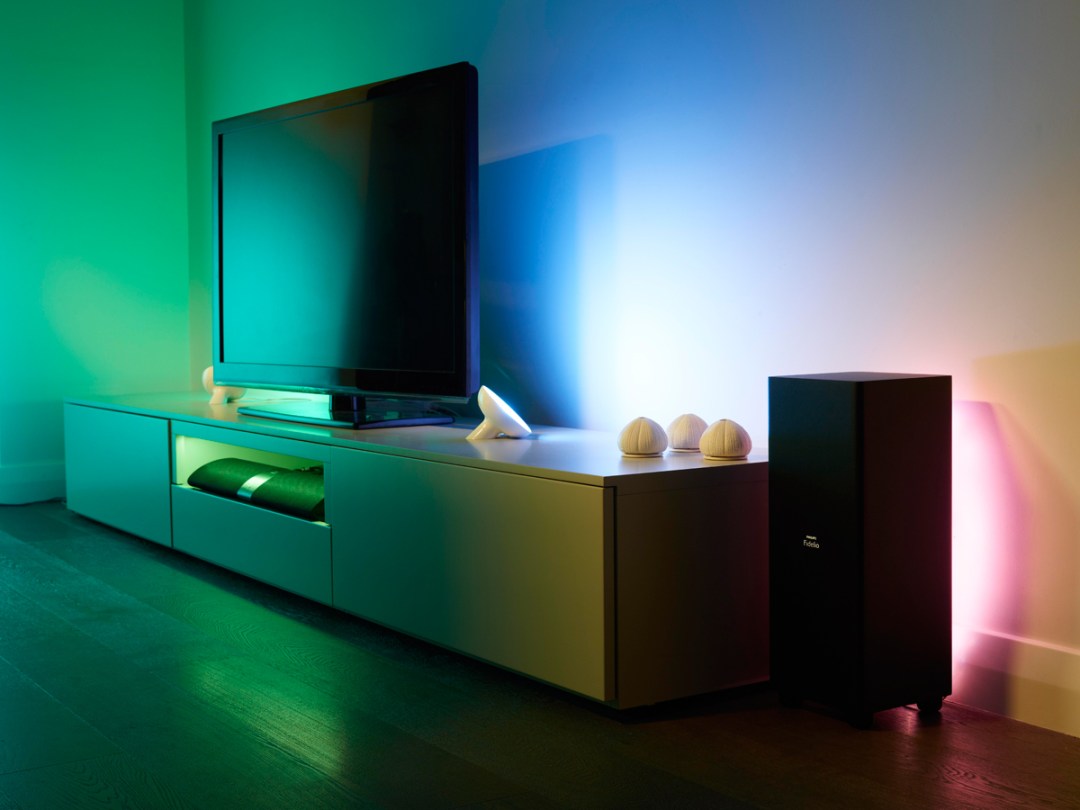
Telly tech is the kind of thing you don’t think you need, but once you’ve tried it you can never go back. Watched anything in standard-def recently? It’s like peering through an old greenhouse lined with bubble wrap.
That’s why we’ve been living in the dark lately, in anticipation of the arrival of Philips’ new Ambilight+Hue setup. You’ll already be familiar with both as separate entities: Ambilight is Philips’ range of tellies with light-up backsides, and Hue is its range of lightbulbs that connect to your Wi-Fi for remote control via an app. Well now they work together.
Setup
Setup is simple. An Ambilight TV with Wi-Fi can now be hooked-up to the same bridge that connects your Hue bulbs to your Wi-Fi network. From there it’s just a case of downloading the new Ambilight+Hue app (available for both Android and iOS) and using the top-down map to position your lights, a bit like arranging your surround sound speakers, although without the predetermined positions. Want the LightStrip to run along the underside of your sofa? Go for it.
At this point we should introduce you to some new members of Hue’s extended family. Joining the standard bulbs are two ‘Friends of Hue’: the LivingColors Bloom, a small uplighter with a stupid name, and the LightStrip, a trimmable, tape measure of LEDs, a little like the ones that might illuminate the aisle of an aeroplane so you can find the emergency exit in the event of a crash (both £80, meethue.com).
Blindingly brilliant
Our test lounge included Philips’ new 65PFL9708 4K Ambilight TV (unlike our real lounge, which doesn’t), two LivingColors Bloom uplighters to the right of it, a LightStrip to the left, a standard Hue bulb in a standard lamp behind us and a copy of Finding Nemo in the Blu-ray player, a film so well-suited to showing off Ambilight TVs that Pixar might as well remaster it and replace all the fish with swimming lightbulbs.
It didn’t take long to show what it could do. The early coral reef scenes bathed the room in a soothing blue-green light, while Nemo’s dash inside a deep-red anemone turned the whole room the colour of an overripe sea tomato (if such a thing exists, we’re not marine biologists). It’s brilliantly immersive, although we can’t imagine it works so well on something like Zero Dark Thirty, a film that ends with approximately 25 minutes of blackness.
The Hue lamps and bulbs tap into whichever Ambilight zone you’ve told them they’re positioned nearest to, so the whole room can be splashed with multiple colours and shades. The brightness and the speed at which the lights change can be altered, although we found it best to keep the speed fairly slow, otherwise it feels a bit like you’re in a nightclub full of soft furnishings. We had them set so they changed a beat or two after the scene on-screen changed, which felt about right. Turn off the Ambilight functionality on the telly and your Hue bulbs go back to doing whatever you had them setup for before.
Before long it starts to feel completely normal; as if you’ve always watched movies like this. Turn it off and everything suddenly feels a bit flat. In fact, we’ve taken to watching Police, Camera, Action! with a flashing blue light on top of the telly and clutching a torch in the hope of recreating that Ambilight+Hue feel.
